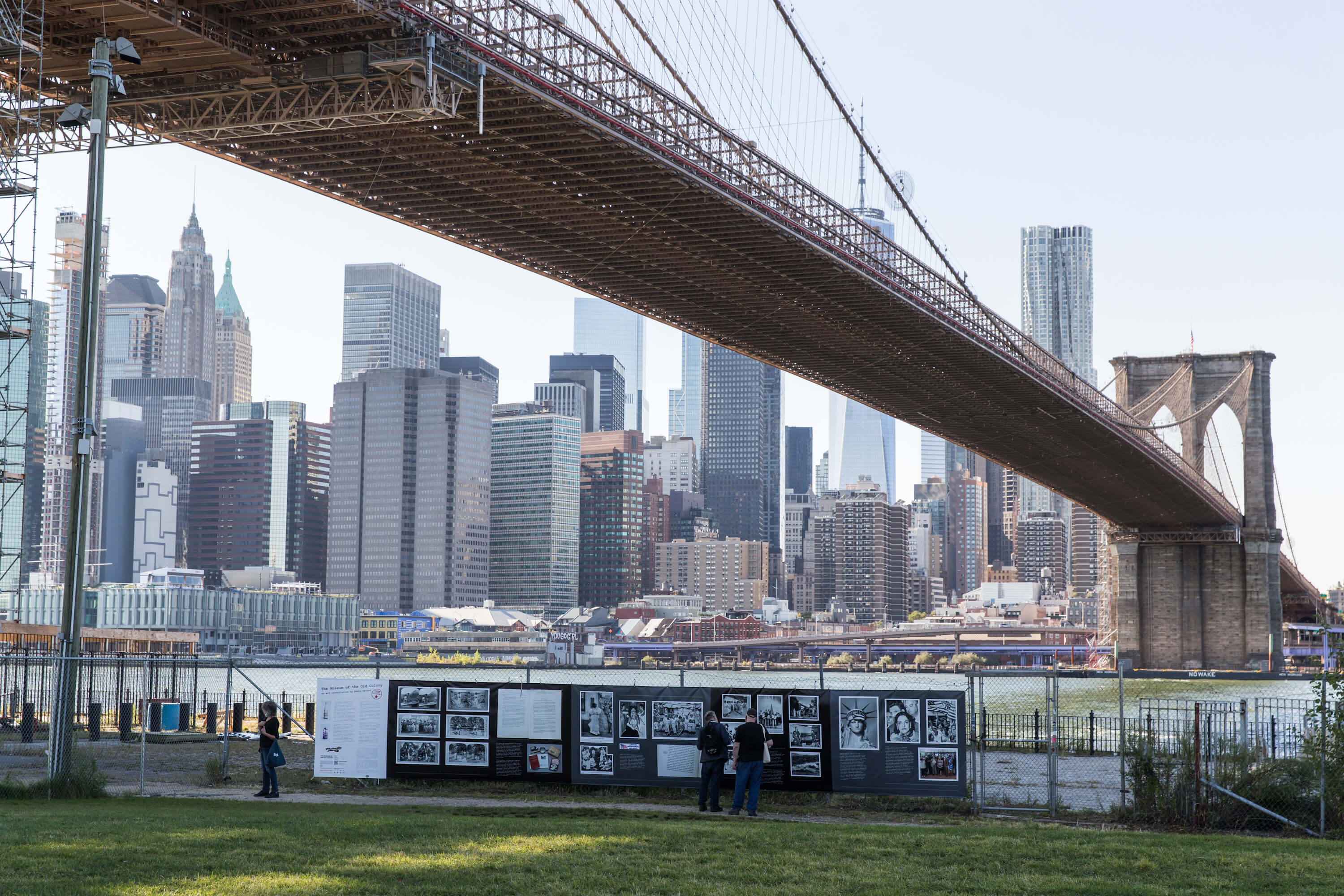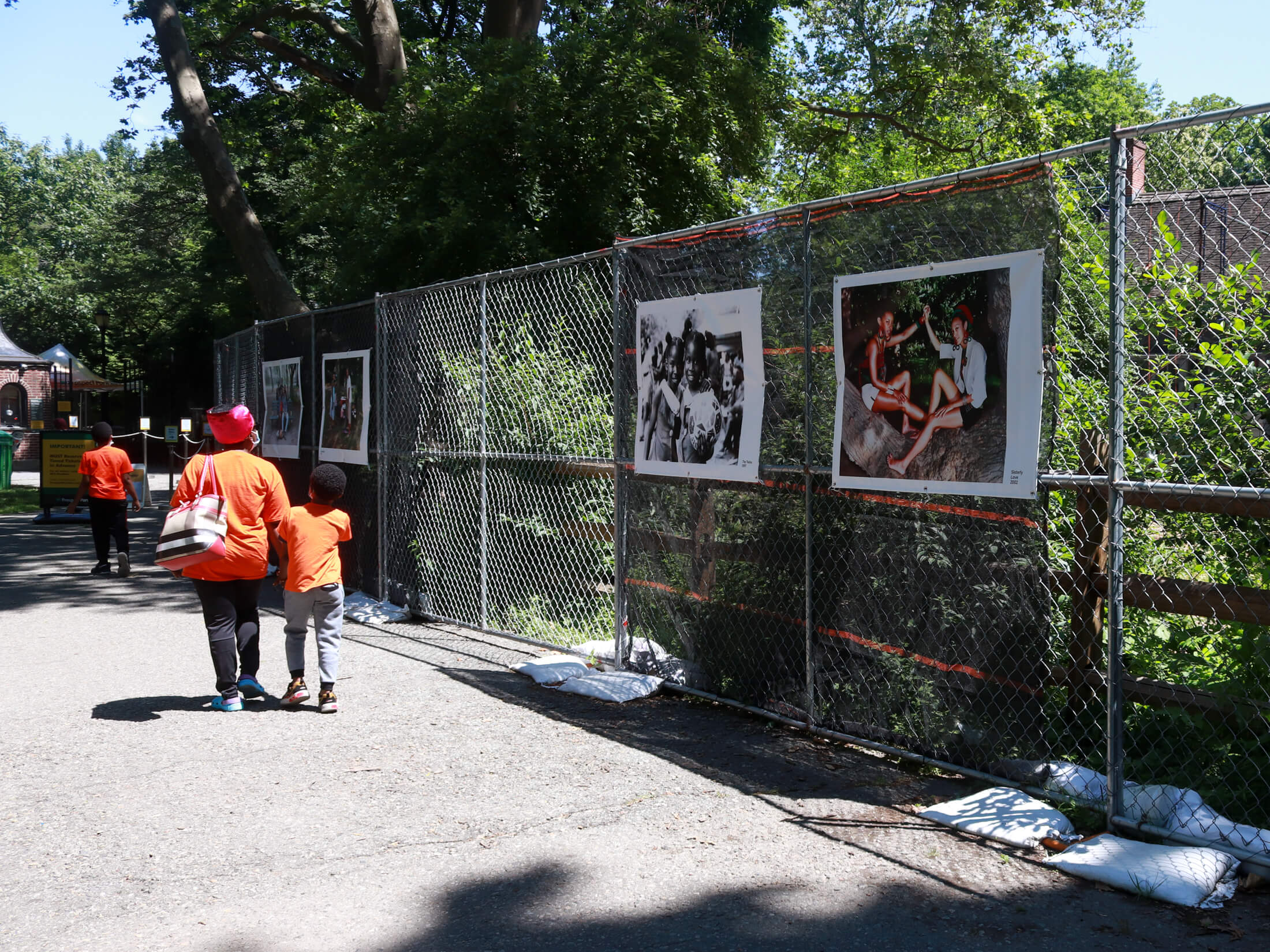Photoville Returns to Brooklyn This Summer for 12th Year of Art Exhibitions
Photoville, a yearly public art display across New York City, is coming back on June 3 with new exhibits at the iconic Photoville Village in Brooklyn Bridge Park.

Photoville in 2016. Photo by Susan De Vries
Photoville, a yearly public art display across New York City, is coming back on June 3 with new exhibits at the iconic Photoville Village in Brooklyn Bridge Park.
This festival marks the 12th consecutive year that the nonprofit will hang public art around the city, with the main attraction housed in the waterfront green space, along with over 80 exhibits across the city.
Many of the photos in Brooklyn Bridge Park’s recently opened Emily Warren Roebling Plaza will be displayed on Photoville’s iconic metal shipping containers, which allow photography lovers to get an up-close look at the artwork.
Suchan Vodoor, a festival producer and a connoisseur of interactive experiences, said that the organization curated the work of over 80 artists and photojournalists, carefully selecting the places where each will be exhibited — both at the mainstay Photoville Village, and at open-air exhibitions across the city.

“Expanding to all five boroughs was transformative for our organization,” said Vodoor. “We are bringing back the Photo Village but we can’t go back to just have that.”
Photoville, one of the biggest and best-known photography events in New York City, expanded from its original Brooklyn Bridge Park location in 2020 amid the Covid-19 pandemic.
While museums and cultural indoor spaces still had to remain closed, the festival scratched its original concept that involved exhibiting photos inside metal shipping containers as individual galleries of each photographer’s work.
The photos were then printed out on banners and shown outdoors, around parks and selected spots facilitated by different organizations across the city.
“We found local foundations that promote art and creativity at places where it could be embraced,” said Vodoor. “We don’t want to cover anyone’s view with an intrusive banner. With the help of the organizations, we are using spots where a picture will be appreciated and can cause the biggest impact. We bring art to you, it is completely free, not behind the ivy tower.”
One of the organizations that Photoville works with, Schomburg Center for Research in Black Culture, facilitated the opportunity to put banners out in Nicholas park in Harlem, where they do much of their work.
“We want you to turn the corner of your neighborhood park and see a picture that would make you cry or would inspire you,” Vodoor said.
On how the festival selects the photos that would go to each borough, he noted the decision is meticulously made — but sometimes the result is evident.
“We look at some photos and we see that the photographer had something very specific to say,” he said.
The curator explained some photographer’s pieces work better in shipping containers that function as “their own world,” or as individual galleries, especially those that expose sensitive content or those that have a specific artistic style. He pointed out Autistic Joy, by Jen White-Johnson, a photo series and biographical exhibition of her son’s journey dealing with autism. The artist‘s style combines layers of color and light that create a sense of movement and it will be set over a vinyl wall in a container with neon elements that will tie the concept together.
Other photos, especially work that celebrates people and aims to be empowering, are printed out on a large scale at high resolution so that they stand “meaningful and powerful,” Vodoor said. One such series, the Crown & Glory Project, portrays underrepresented young creatives in NYC wearing crowns made by themselves out of unconventional and found materials to capture their individuality and goals as future creative leaders.
“The theme for every year’s Photoville is diversity of all kinds,” said Vodoor.

The producer said one of the main themes of this year is the war on Ukraine seen from fresh perspectives, different celebrations of people and, overall, diversity.
“When we were choosing, we asked ourselves if there was a different way to tell the same story, but that is more colorful, that adds to the narratives that other organizations are not already telling,” he said. “We found the submission of a photographer who worked with kids in refugee camps having them draw as a form of therapy.”
War Toys: Children’s Stories of Survival and Loss is a body of work by acclaimed art director and producer Brian McCarty. His approach is based upon integrating toy characters into real-life situations through the use of forced perspective in carefully crafted scenes. This series uses an art-therapy-based approach to collaborate with war-affected children and re-create their personal accounts through narrative photographs of locally sourced toys, placed and posed at the actual locations.
“Through these, we can see the conflict through the eyes of a child,” said Vodoor. “We can present a unique perspective away from the media landscape.”
Other images from the war in Ukraine were captured by the PBS Frontline-presented exhibition “Bearing Witness: Documenting War Crimes in Mariupol, Ukraine” and the New York Times-presented “Russia’s Invasion of Ukraine: The Ongoing War.”
Photoville NYC 2023 kicks off with a free-to-the-public opening weekend in Brooklyn Bridge Park on June 3 and 4 from noon to 10 p.m. and will run through August in its different locations. The Festival will feature interactive workshops, artist tours, exhibitions, evening programming, and Smorgasburg.
Editor’s note: A version of this story originally ran in Brooklyn Paper. Click here to see the original story.
Related Stories
- This Year’s HDC Preservation Conference Will Focus on Public Art and Cultural Sites
- Join the Lefferts Manor Association for a Walking Tour and Get a Peek Inside Two PLG Homes
- Photographer Irina Rozovsky Captures the Sights and Sounds of Prospect Park
Email tips@brownstoner.com with further comments, questions or tips. Follow Brownstoner on Twitter and Instagram, and like us on Facebook.









What's Your Take? Leave a Comment